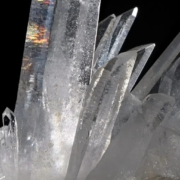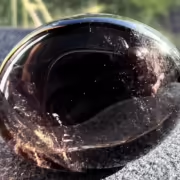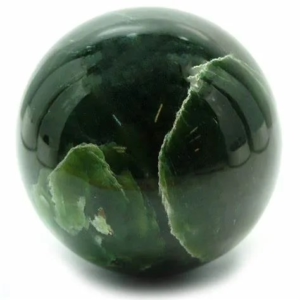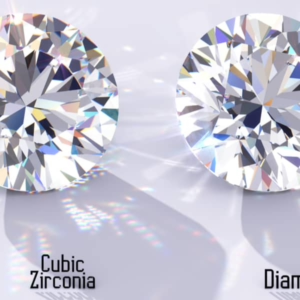Quartz Importance in jewelry and ornamental objects
Quartz is one of the most abundant and versatile minerals on Earth, and its significance in jewelry and ornamental objects is vast. Here’s why quartz holds such an important place in the world of fine jewelry and decorative arts:
1. Variety and Availability
- Wide Range of Varieties: Quartz exists in many varieties, making it suitable for a wide range of jewelry and ornamental applications. Some of the most popular forms include:
- Amethyst: A purple variety of quartz that is highly prized for its vibrant color and often used in rings, necklaces, and earrings.
- Citrine: A golden-yellow to amber variety of quartz, often used in jewelry to represent warmth and prosperity.
- Rose Quartz: A translucent pink variety that has a romantic and soothing aesthetic, popular in bracelets, necklaces, and pendants.
- Smoky Quartz: A brown to gray variety that is commonly used in men’s jewelry and in more understated, elegant designs.
- Clear Quartz (Rock Crystal): Colorless and transparent, clear quartz is widely used both for its visual appeal and its ability to be carved or faceted.
- Prasiolite: A rare green form of quartz, often used in high-end jewelry pieces.
- Accessibility: Quartz is abundant and relatively easy to mine compared to rarer gemstones, which makes it a more affordable alternative to other gemstones like diamonds, rubies, or sapphires. Despite its availability, high-quality quartz can still be quite valuable, especially when it displays exceptional clarity or color.
2. Durability and Workability
- Hardness: Quartz is relatively hard, rating 7 on the Mohs scale of hardness. This makes it durable enough for use in jewelry that can withstand daily wear, while still being easier to cut and polish than harder gemstones like sapphire or diamond.
- Ease of Crafting: Quartz is an ideal material for carving, polishing, and faceting. Its variety of colors and translucency allow artisans to create intricate and beautiful designs. Additionally, quartz can be treated and enhanced in many ways (such as heat treatments) to achieve more vibrant colors or unique effects.
3. Symbolism and Meaning
- Healing Properties: In metaphysical and healing circles, quartz is often referred to as the “Master Healer.” It is believed to amplify energy and thought, and to promote clarity and balance. Many people wear quartz jewelry for its supposed ability to aid in healing, spiritual growth, and emotional wellbeing.
- Spiritual Significance: Clear quartz, in particular, is believed to be a powerful energy amplifier, often used in meditation, rituals, and spiritual practices. It is said to help connect the wearer to higher consciousness or to clear negative energy.
- Color Symbolism: Different varieties of quartz are associated with various meanings based on their color:
- Amethyst: Purity, calm, spiritual protection.
- Citrine: Abundance, success, personal power.
- Rose Quartz: Love, compassion, emotional healing.
- Smoky Quartz: Grounding, protection, release of negative energy.
4. Aesthetic Qualities
- Transparency and Clarity: Quartz, especially clear quartz, is prized for its transparency and ability to reflect light. This makes it an attractive gemstone for faceting and gives it a sparkling, glass-like appearance that can rival other precious stones. Clear quartz is often used in fine jewelry to create a brilliant shine.
- Color Variety: Quartz’s ability to occur in such a wide range of colors—from deep purple amethyst to soft pink rose quartz to sunny yellow citrine—gives designers and consumers many choices for creating unique pieces. Its colors can be vibrant and bold or subtle and delicate, fitting various personal styles and design preferences.
- Inclusions and Effects: Some varieties of quartz, such as Rutilated Quartz (which contains thin, needle-like inclusions of rutile) and Milky Quartz (which has a cloudy appearance), are valued for their unique inclusions, which add a natural, ethereal beauty to the stones. These inclusions are often seen as symbols of individuality and nature’s artistry.
5. Role in Decorative Objects
- Carvings and Sculptures: Quartz is often used for ornamental carvings and sculptures. Clear quartz can be carved into intricate shapes, while other varieties like amethyst or rose quartz are commonly used to create decorative objects such as figurines, vases, and beads.
- Watches and Clocks: Quartz is essential in modern timekeeping. Quartz crystals are used in watchmaking to regulate the time, and quartz-based watches are highly accurate, durable, and widely accessible.
- Home Décor: Quartz crystals and geodes are popular in home décor, often used as display pieces or natural decorations due to their unique formations and shimmering surfaces. Geodes of amethyst or citrine are especially prized for their stunning interior crystal formations.
6. Industrial Uses
- While not directly related to jewelry, quartz has important industrial applications as well. Its piezoelectric properties (ability to generate an electrical charge when stressed) make it valuable in electronics, and its use in glassmaking and as a raw material in the manufacturing of computer chips and optical devices further highlights its versatility.
7. Modern Popularity
- In contemporary jewelry, quartz is used both in luxury pieces (such as those incorporating high-quality amethyst or citrine) and in more accessible, fashion-forward designs. Its relatively low cost combined with a vast range of colors and forms makes it popular among jewelers and consumers alike. Quartz is often used in combination with other gemstones or materials, making it a flexible addition to mixed-media designs.
Conclusion
Quartz is incredibly important in both the jewelry and ornamental object markets due to its vast range of colors, durability, availability, and symbolic significance. Whether used for its beauty, its healing properties, or its versatility, quartz continues to be a beloved material in cultures around the world, making it one of the most widely utilized and appreciated minerals in decorative arts and jewelry.
Would you like to explore specific quartz varieties or learn more about how they are used in different cultural contexts?




Leave a Reply
Want to join the discussion?Feel free to contribute!